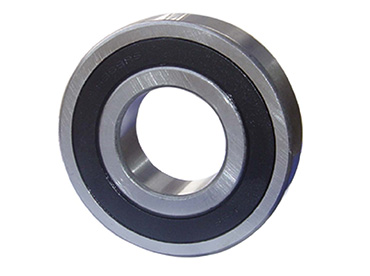Electric motor bearings are integral components in the smooth and efficient operation of electric motors. These bearings play a crucial role in supporting the rotor and allowing it to rotate with minimal friction. In this article, we explore the importance of electric motor bearings, their functionality, and their impact on the overall performance of electric motors.
The Role of Electric Motor Bearings

Providing Mechanical Support
Electric motor bearings are designed to provide mechanical support to the rotating components of the motor, such as the rotor. They enable smooth and precise movement by reducing friction and minimizing wear and tear. By maintaining proper alignment and clearance, these bearings ensure the longevity and reliable operation of the motor.
Reducing Friction and Energy Loss
One of the primary functions of motor bearings is to minimize friction between moving parts. Friction can cause energy loss, heat generation, and premature wear of components. High-quality bearings with low friction coefficients help maximize the efficiency of electric motors, leading to reduced energy consumption and improved overall performance.
Enabling Smooth Rotation
Electric motor bearings facilitate smooth rotation of the rotor, allowing the motor to operate without excessive noise or vibration. This smooth rotation is essential for various applications, including industrial machinery, HVAC systems, automotive systems, and household appliances. By minimizing unwanted vibrations, bearings contribute to a quieter and more comfortable user experience.
Handling Radial and Axial Loads
Electric motor bearings are designed to handle both radial and axial loads. Radial loads are forces acting perpendicular to the shaft, while axial loads act parallel to the shaft. The bearings' design and construction ensure optimal load distribution, enabling the motor to operate under varying load conditions without excessive strain or premature failure.
Choosing the Right Electric Motor Bearings
When selecting electric motor bearings, several factors need to be considered:
Load Capacity and Speed
The bearings' load capacity should align with the motor's operational requirements. Additionally, the bearings should be capable of handling the motor's speed without compromising performance or durability. Manufacturers provide specifications indicating load capacities and maximum speeds, aiding in the selection process.
Bearing Type and Design
Various bearing types are available, including ball bearings and roller bearings. The choice depends on factors such as the motor's load characteristics, speed, and operating conditions. Manufacturers often provide guidance on selecting the most suitable bearing type and design for specific applications.
Lubrication and Maintenance
Proper lubrication is crucial for the smooth operation and longevity of electric motor bearings. Lubricants reduce friction and prevent wear and corrosion. It is essential to follow the manufacturer's recommendations regarding lubrication intervals and types of lubricants to ensure optimal performance. Regular maintenance, including cleaning and inspection, also plays a vital role in extending the bearing's lifespan.
Conclusion
Electric motor bearings are vital components that enhance the efficiency and performance of electric motors. By providing mechanical support, reducing friction and energy loss, enabling smooth rotation, and handling radial and axial loads, these bearings contribute to the smooth and reliable operation of electric motors in various applications. When selecting electric motor bearings, considering factors such as load capacity, speed, bearing type, and proper lubrication will ensure optimal performance and maximize the lifespan of the motor.
评论
发表评论